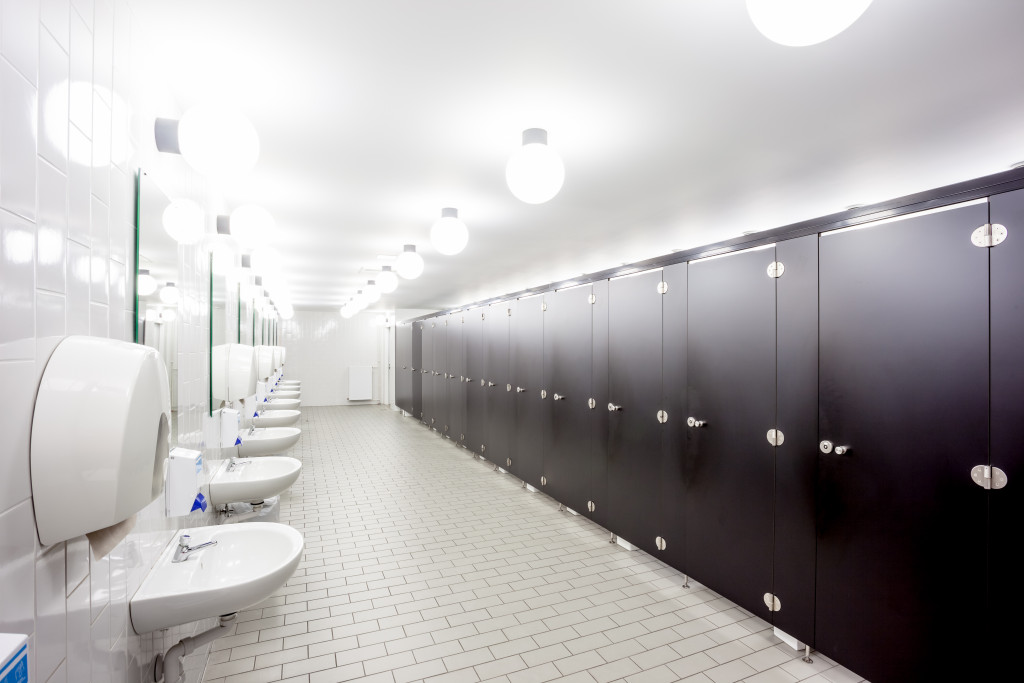The interiors of a workplace have been proven to have an impact on productivity and employee well-being. Aside from aesthetics, researchers have found that a good quality design is less stressful, more comfortable, and calmer. Moreover, it creates a space where people are inspired to give their all to their work every single day.
However, when talking about office design, there is one aspect that does not often get mentioned: the bathroom.
In a house, the bathroom is a space for self-care. People pour so much money toward making their bathrooms not just clean but pleasant to the sight. It is one area of the house that is used multiple times throughout the day and for a variety of purposes.
The same care should be given to bathrooms in workspaces.
How Bathrooms Affect Employees
Research has been conducted on the impact of office toilet amenities on employees. In one study conducted in the United Kingdom by the Association of Plumbing and Heating Contractors, about 16.5 percent of workers admitted that they are not satisfied at their current jobs because the bathroom is not up to standards. They complain about decor, the smell, the tiling, leaking taps, and cleanliness.
A good quality bathroom does not just look good. It makes people feel safe. Inadequate bathrooms at the workplace will lead to poor health, reduced focus, decreased productivity, exhaustion, and absenteeism. Bathrooms in the office can be a hotspot for infections — something that has been proven during the pandemic.
Pleasant Multi-Sensory Experience
The ideal bathroom looks, smells, and sounds good. Most public bathrooms utilize light colors, especially white, on walls, floors, and other fixtures to evoke cleanliness. However, for spaces used by multiple people, light colors can be a nuisance. White specifically makes any hint of dirt visible.
Offices, therefore, should use materials that can be easily cleaned. A smooth and flat bathroom vanity unit can be wiped and disinfected using a rag. Avoid porous materials. Porcelain, stone, vinyl, ceramic, glass, and other materials are ideal for public bathrooms.
In addition, offices should think twice about using grout. Dirt immediately builds up in between tiles. Grout is not easy to clean, either. It often requires bleach and a good scrubbing.
The smell of the bathroom is also a major concern. People use it to unload bodily wastes, but it should not have any unpleasant stench. Ample ventilation is necessary to remove natural smells.
Moreover, most public bathrooms also use scent diffusers to mask invasive odors and to keep everyone feeling at ease. Providing potpourri in every stall will be a welcome addition.
Do not forget the sounds. People do not want to hear the sound that comes from using the bathroom, either. Each stall should have full-height partitions to give the user privacy. Some use speaker systems that play soothing music to drown out any noise that comes from bathroom use.
A Space That Prioritizes Hygiene
The bathroom is key to making workplaces safe from diseases. COVID-19 emphasized the need for good hygiene which includes proper handwashing with soap and water. And, although the illness spreads via aerosols and droplets, there are several other diseases that people can catch by touching a high-traffic surface.
The bathroom, where people eliminate bodily wastes, is the perfect space for viruses and bacteria to cause infections.
Ventilation is important to remove odors, but it also decreases the germs that might have been ejected into the air through flushing, coughing, sneezing, or speaking. In addition, work bathrooms should consider no-touch faucets, flushes, and doors. This will ensure that people do not leave or carry pathogens when they use the bathroom.
Add a Touch of Home
Bathrooms do not have to be cold and utilitarian. It should be a place where people can feel comfortable.
More workplaces are imitating hospitality and retail sectors by creating a bathroom that feels residential than institutional. They are incorporating wallpapers with interesting patterns and warmer lighting rather than the cool white bulb that every public bathroom seems to have. They add plants to purify the air and to give life to the space. There are also bag hooks, phone rests, jewelry holders, and access to Wi-Fi.
People use the bathroom for multiple purposes. They fix their hair and makeup, brush their teeth, wash their hands, or even catch up with colleagues. While employers want to make the bathroom as utilitarian as possible to minimize spending inside, the move will be counterproductive. Inadequate bathrooms do not boost employee morale, but a pleasant bathroom that offers more than a toilet and a sink creates satisfied and inspired workers.


